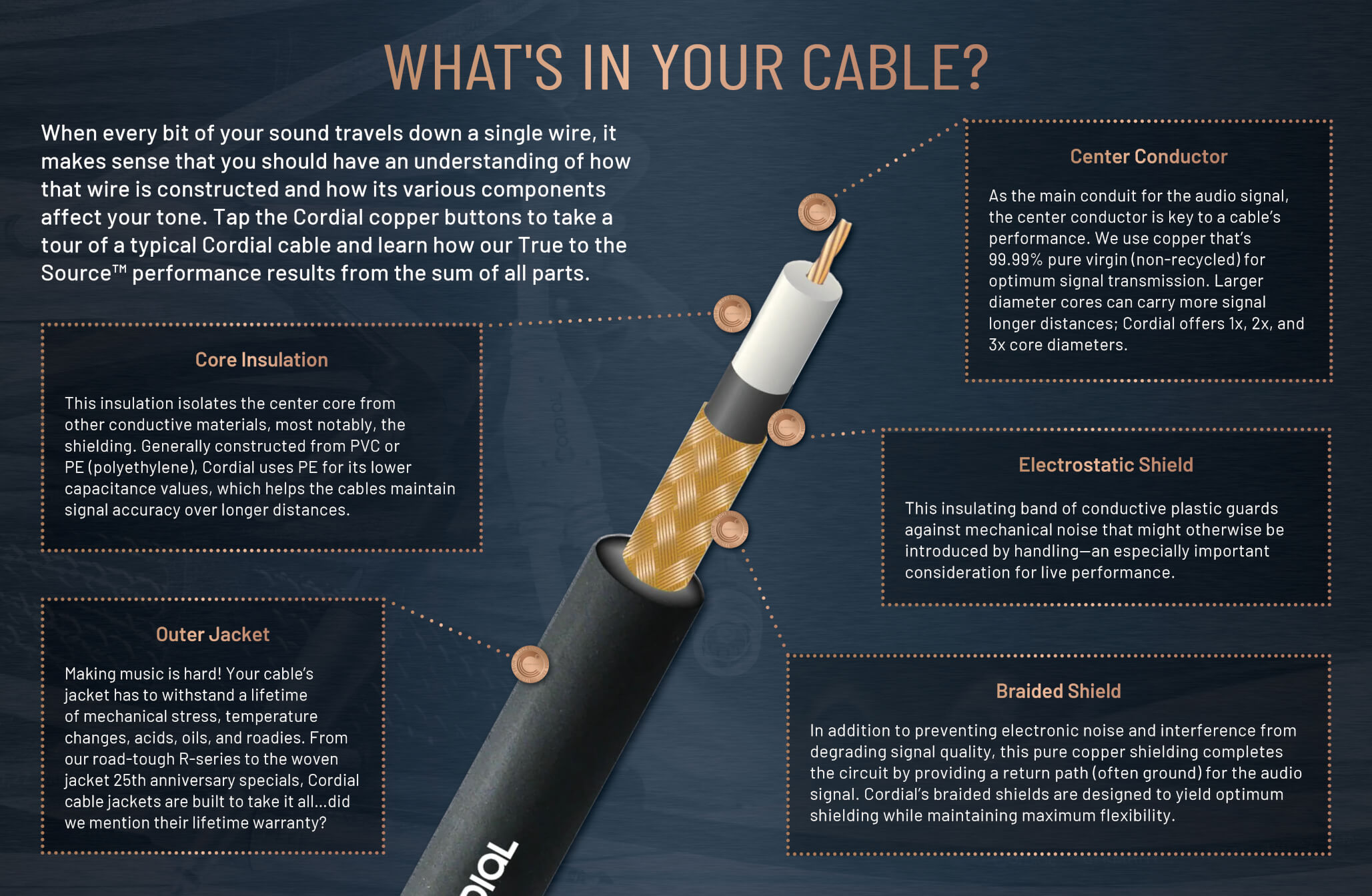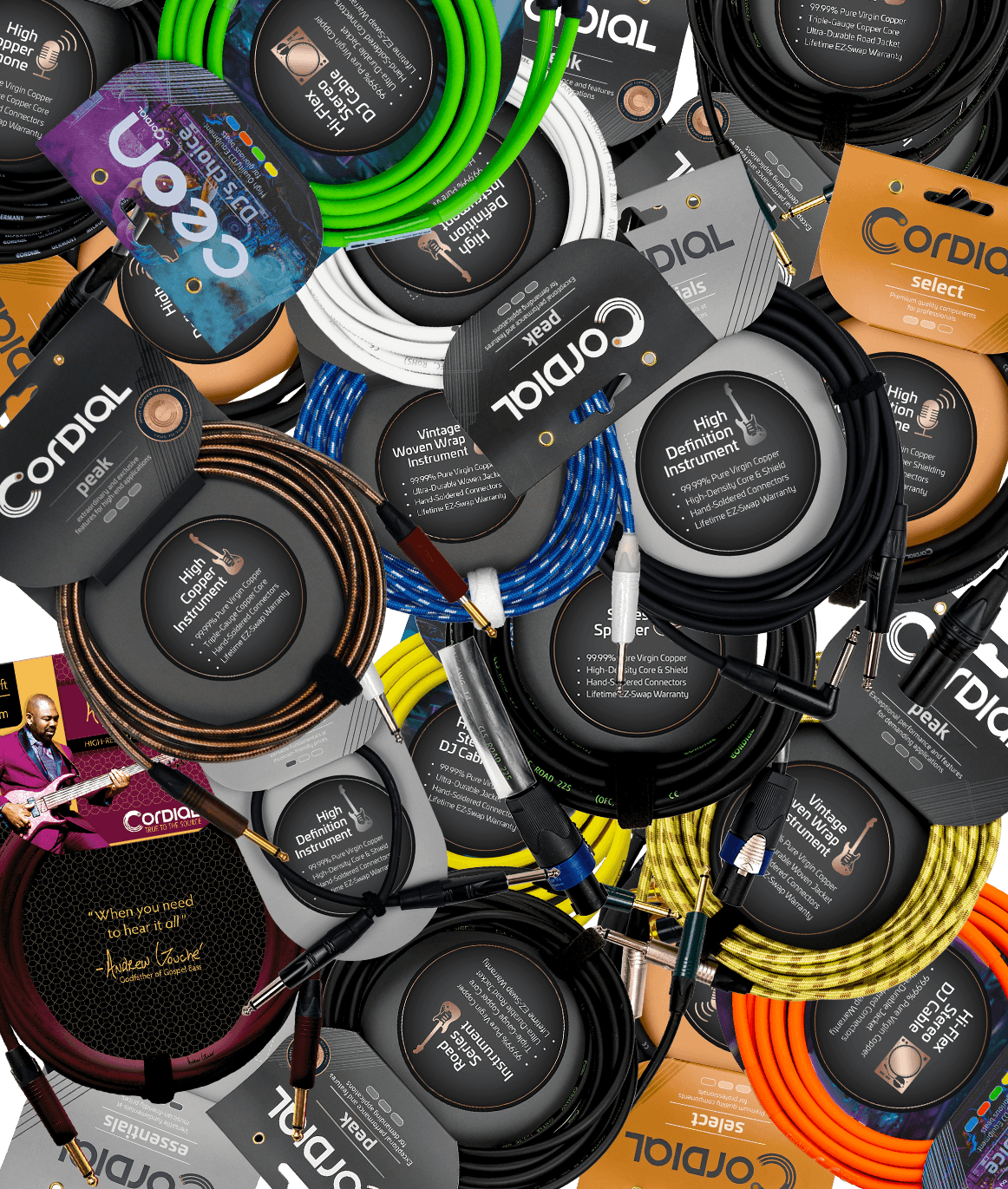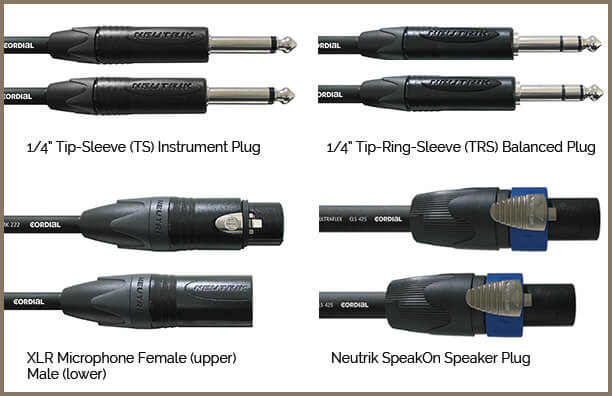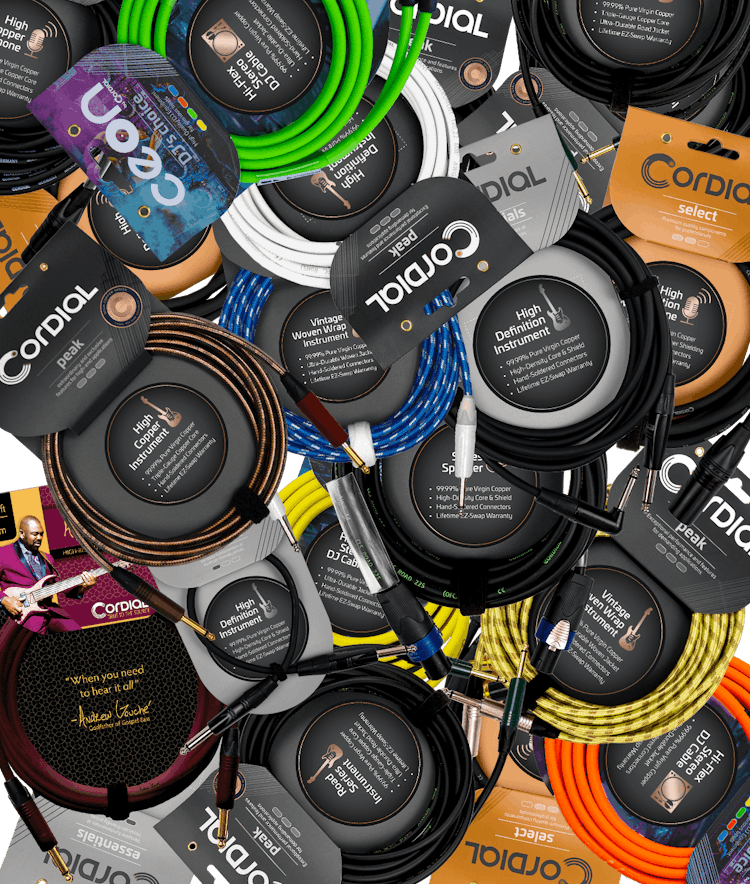Most musicians think of a cable as a mere accessory—an unassuming piece of wire that connects their guitar to their amp, and as long as it passes a signal, they’re good to go. But as simple as a cable may be, it’s actually a critical component of your setup and your sound, and it can make or break your tone. Think of it like the tires on a car: No matter how fancy, fast, powerful, or expensive the car is, the ride is going to be shaky and unreliable if the tires are bad.
In other words: If you want dependable performance and you want your tone to shine through, you need a good cable that’s up to the task.
Choosing the right cable for your needs can be tricky because cables tend to look pretty much the same from the outside—and similar-looking models can have huge variances in price and performance. To make an informed decision and distinguish the good from the not-so-good, you need to take a peek under the hood.
Basic Cable
Instrument cables, such as for guitar and bass, all have a single center conductor, called the core. It’s the heart of the cable because literally all of your sound passes through it. It’s usually made of copper, because dollar for dollar, nothing beats the performance and value of premium quality copper. It’s important that the copper used for the core is both thick enough for the job and of super high quality. When it comes to passing an audio signal down a cable, quality means purity.
Even air molecules in copper are considered impurities because they can interfere with the smooth flow of your signal down the wire. Because of this, a good quality cable will always specify being made from oxygen-free copper, or OFC. Since it’s physically impossible to get every last molecule of oxygen out of the wire, you’ll usually see specs like “99.9% Pure Oxygen-Free” listed.

Copper is expensive, too, so many cable companies use recycled copper because it’s much cheaper than brand new unused copper. But recycled copper contains impurities, and if you think it’s tough for an audio signal to get around an air molecule, imagine the trouble it has with dirt!
Copper is also used to create the electrical shielding around the core, which helps prevent electrical interference, such as from fluorescent lights, from introducing noise into your signal. Premium cables also feature a specialized electrostatic shield around the core that separates the core from the copper shield and guards against both electrical and mechanical noise. This secondary core shielding is really important, otherwise you (or, rather, your cable) will be making a bunch of unwanted noise every time you move.

The core and shield are wrapped in a rubber or plastic coating called a “jacket.” Jackets can be plain black, colored, rubberized for extra protection from wear and abuse, outfitted with a woven wrap for unique looks, and more.
The thickness of the copper core, the design of the copper shielding, and the type of jacket all work together to determine how flexible a cable is. A good cable will balance the functions of these three ingredients against the cable’s overall flexibility.

Last up: Connectors. Cables come topped with plugs in literally hundreds of shapes and styles. And just like the wire used, these connectors can make or break a cable. Avoid off-brand, lightweight plugs and those that don’t properly support the cable with a strain relief where it enters the plug. Remember, you’ll be plugging and unplugging your cables hundreds—if not thousands—of times, and the plug needs to hold up. By the way: Always hold onto the connector when unplugging the cable; pulling a cable out by the wire is the fastest way to break it.
“Cordial cables offer solid reliability and make sure I’m getting my true sound. What more could you ask for?” - Eva Gardner, Bassist for P!nk, Gwen Stefani, Cher
Types of Cables
If you’re playing guitar or bass, you’re using an instrument cable, which features what are known as 1/4” TS connectors. The 1/4” references the diameter of the post, and TS stands for Tip / Sleeve. Internally, the cable’s center copper core is soldered to the tip and the shield is soldered to the sleeve. Instrument cables are sometimes referred to as “unbalanced” cables.
Microphones and certain types of pro audio gear use three-wire balanced cables, which have two center copper cores and one copper shield. Balanced cables usually come with one of two plug types, XLR for microphones and powered monitors and TRS for speaker systems. TRS stands for Tip / Ring / Sleeve. In form, it’s just like the TS instrument plug, but with an additional “ring” that is connected to the second core.
Unbalanced speaker cables can be tricky to identify because they can look like instrument cables—right down to the 1/4” TS connector. But unlike instrument cables, speaker cables have two center cores and no shielding, which makes them totally unusable for instruments—unless you like huge amounts of hum and noise in your sound! Most passive—or unpowered—speaker systems use unbalanced speaker cables. Powered speaker systems, such as concert PAs, almost always make their connections using balanced XLR cables.
Some speaker systems, primarily those in live environments, have adopted Neutrik’s SpeakOn connectors, easily recognized by their unique shape. Of course, the cabinet you plug them into has to be designed to accept them.

How Long Should My Cable Be?
Does this really matter? Absolutely! A cable’s length affects its performance, and shorter is better. Here’s why: cables have certain electrical properties that affect the signal passing through them, the primary one being capacitance. In simple terms, a cable’s capacitance determines the cable’s ability to pass high frequencies. As a general rule, the lower its capacitance, the better a cable will perform; the higher the capacitance of the cable, the less high-end (treble) you will hear.
As a cable gets longer, its capacitance increases—that’s the laws of physics at work—so fewer high frequencies pass through it. Worse, it’s not just the length of a single cable that’s the problem, but the combined length of all of the cables in your setup. As the total length increases, your tone gets duller and duller.
The way to combat this problem is pretty simple: Use high-quality / low capacitance cables and keep cable lengths as short as is practical. If you’re not running back and forth across the stage, use a 10’ cable from your instrument to your pedalboard rather than a 20’ or 30’ one. Similarly, don’t put 12” cables between pedals if you can get away with 6” cables, and so on.
If you move around a lot and need long cables, they should be low capacitance cables and have large diameter copper cores. These “high-copper” cables allow your signal to travel without compromise for greater distances than standard cables.
“Really impressive! Unparalleled workmanship. I know they’re not going to fall apart when I’m 5,000 miles away from home.” - Jennifer Batten, Guitarist for Michael Jackson, Jeff Beck
Cable Care
As the one piece of equipment in your system that carries all of your sound, you should treat your cables with the same care and concern that you do the rest of your gear. You don’t have to baby them, but you shouldn’t deliberately walk on them, or run over them with a truck, or slam them in a door, or leave them in a tangled mess on the floor. Instead, treat them like you treat your instrument, and when you’re done, take a minute to properly wind and store them.
Yes, there’s a right way and a wrong way (actually, many wrong ways) to wind a cable. Wind a good cable properly, as shown in the video below, and it can last you a lifetime. Freebie/cheapo cables, on the other hand, are going to wear out and break no matter how well you treat them. (Moral: Use good cables.)
Checking the Boxes
You might wonder where Cordial cables fit into all the above. Let’s see: They’re made from 99.9% pure oxygen-free unrecycled copper. Check. They’re low-capacitance. Check. They have high-copper cores. Check. They use Neutrik connectors. Check. They’re available with extra tough road wraps, woven jackets, and cool colors. Check. And they feature world-class reliability backed by a lifetime EZ-Swap Limited Warranty. Check and check!
Cordial cables are available directly from School of Rock via the GearSelect program. Check your local school for details.






